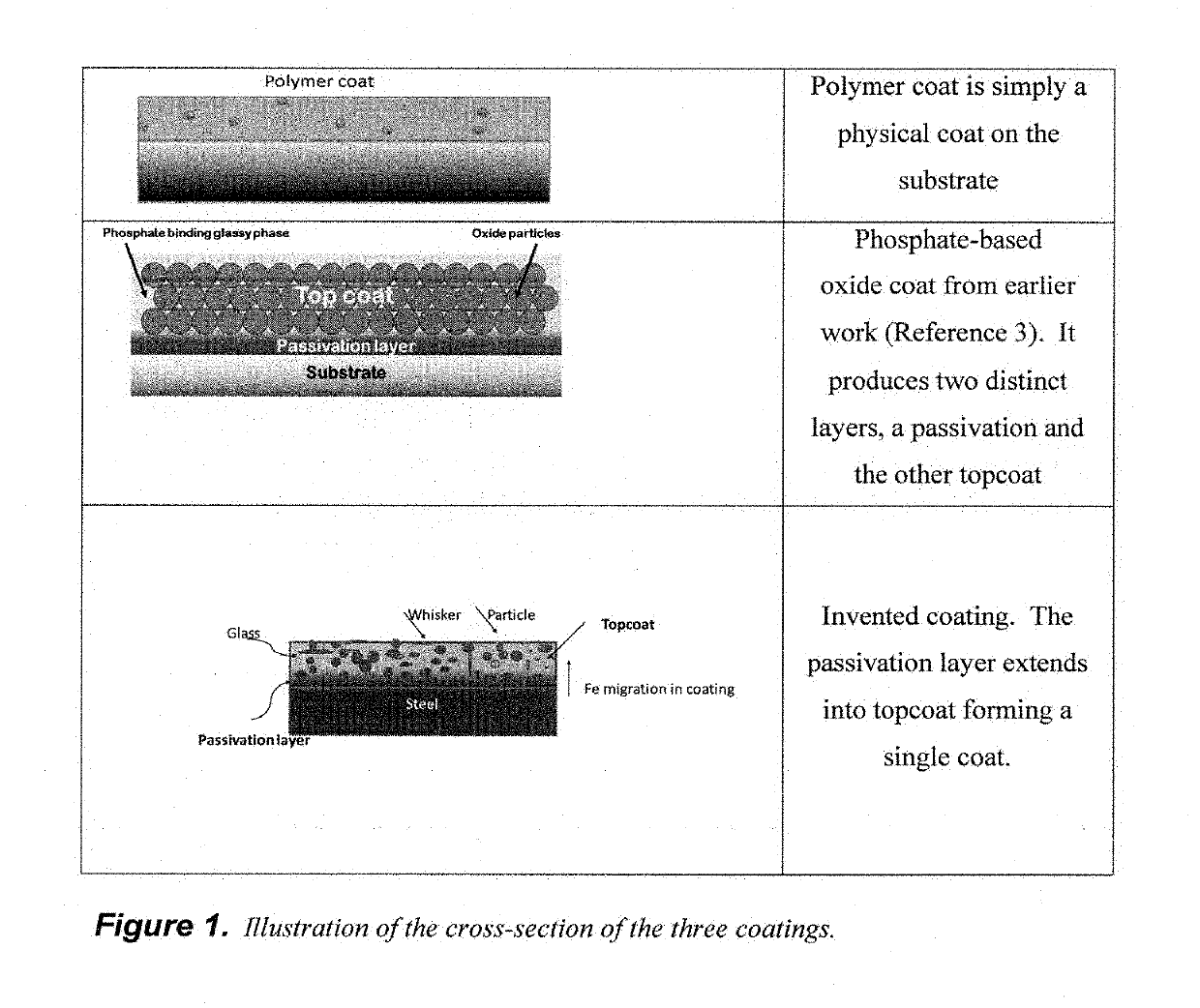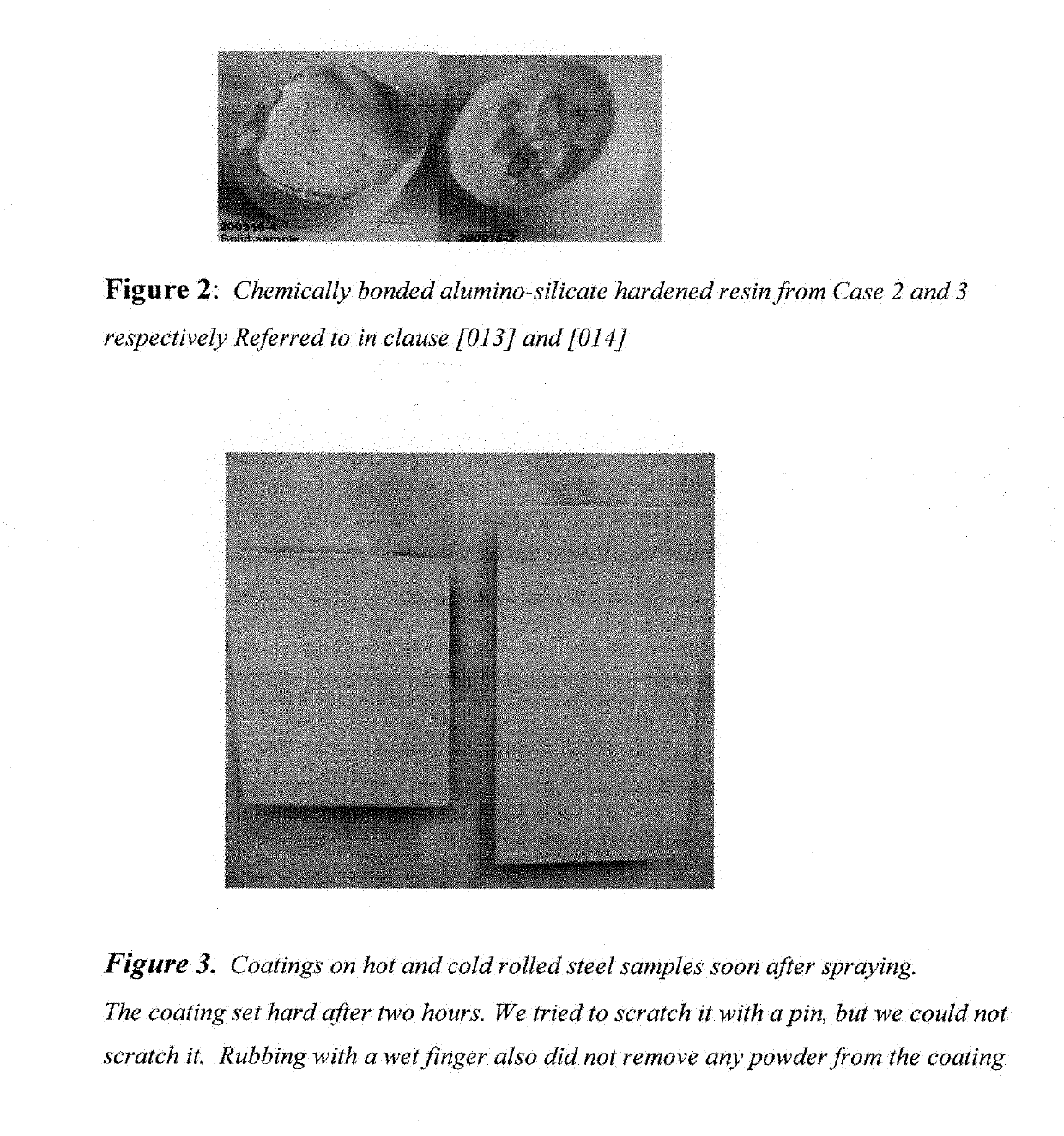Sprayable alumino-silicate coatings, resins, their compositions and products
a technology of alumino-silicate coatings and resins, applied in the direction of radiation-absorbing paints, biocides, coatings, etc., can solve the problems of affecting the ozone layer at the low level, exposing the scratched surface, and prone to corrosion
- Summary
- Abstract
- Description
- Claims
- Application Information
AI Technical Summary
Benefits of technology
Problems solved by technology
Method used
Image
Examples
case study 1
[0053
[0054]A slow-setting formulation was developed by reducing 50% phosphoric acid solution with 1-5% aluminum by weight in it, and then reacting it with the 75% concentrated aqueous mixture of invented alumino-silicate material in the ratio of 1:2.5 and in another test 1:5. The resulting solids were ivory white, dense, and water impermeable, each hardening in 30 min. The photographs are presented in FIG. 2.
case study 2
[0055
[0056]The same test was done with 67% concentrated phosphoric acid solution, again reduced by 1-5% aluminum by weight. This time the ratio of the acid solution to the aqueous solution of the invented material was mixed with 1:2.5 by weight. The solid samples were cast, which set very rapidly within 5 min.
case study 3
[0057
[0058]In this study, we used an acid-phosphate, NaH2PO4. The powder of this acid-phosphate was dissolved in water in the ratio of 1.6:1. The solution was reduced by adding 1-5% aluminum. The reaction was exothermic, but once it cooled, we mixed it with the aqueous paste of 75% concentrated invented material and the solution in the ratio of of 1.8 to 1. Solid samples were made and also steel and aluminum alloy plates were brush-coated (see FIG. 5). Both set rapidly into hard alumino-silicate coatings.
[0059]In another similar study with NaH2PO4, the powder of this acid-phosphate was dissolved in water in equal amount. The solution was reduced by adding 1-5% aluminum at warm temperature to ensure easy dissolution. We added 8.3% H3PO4 solution that was 85% concentrated to produce the acidic paste.
[0060]The alkaline paste was prepared by mixing the invented glass mixture, a divalent oxide and a small amount of boric acid (<0.5%). The resulting powder mixture was mixed with 35% water...
PUM
| Property | Measurement | Unit |
|---|---|---|
| Temperature | aaaaa | aaaaa |
| Temperature | aaaaa | aaaaa |
| Fraction | aaaaa | aaaaa |
Abstract
Description
Claims
Application Information
 Login to View More
Login to View More - R&D
- Intellectual Property
- Life Sciences
- Materials
- Tech Scout
- Unparalleled Data Quality
- Higher Quality Content
- 60% Fewer Hallucinations
Browse by: Latest US Patents, China's latest patents, Technical Efficacy Thesaurus, Application Domain, Technology Topic, Popular Technical Reports.
© 2025 PatSnap. All rights reserved.Legal|Privacy policy|Modern Slavery Act Transparency Statement|Sitemap|About US| Contact US: help@patsnap.com



